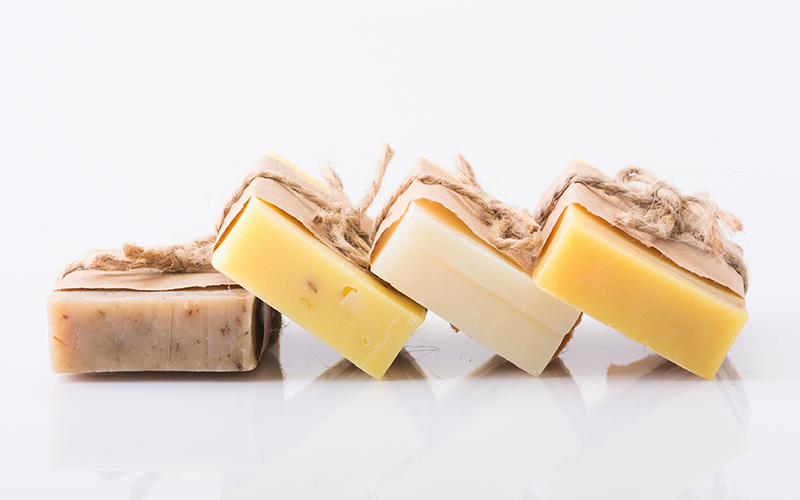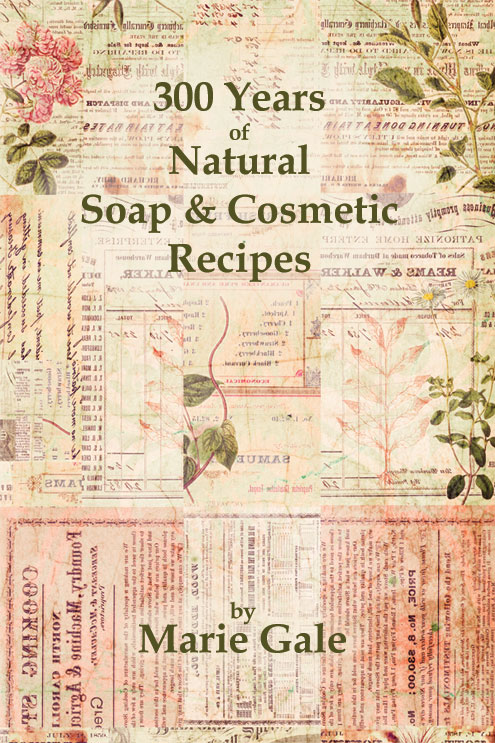Making soap is both a science and an art. For me, it’s the combination of the two that makes the whole thing so fascinating. That, and the joy of having my own custom-made, custom-scented, just-perfect-for-me soap. Add to that the fact that I can share it with other people and make some income while doing so and it’s a really good fit for me.
The Science of Soap Making
Technically, true soap is “the result of a reaction between fatty acids and an alkali.” Fatty acids are found in animal and vegetable fats and oils; an alkali (for soap purposes) is lye. So basically, when animal or vegetable fats or oils (not petroleum based oils) are mixed with lye, the result is soap.
In practical application, there are a few other aspects to the process. The oils and fats need to be melted so they are liquid and the lye needs to be dissolved in water so it can be mixed in with the oils. While the mixing is occurring, the lye combines with the fatty acids (thus making soap) and the water combines with glycerine (found in the oils and fats). So, in the final analysis a bar of “natural” or “true” soap contains soap, water and glycerine.
During the process several interesting things happen. First, the reaction that takes place causes heat, so the soap pot will tend to get pretty warm all on its own. Second, the mixture goes from being completely liquid to getting thicker and thicker. While it’s still pourable it gets poured into a mold and when it comes out of the mold (usually 24-48 hours later, after it has cooled down), it’s a solid. Third, when the soap comes out of the molds it is still a little soft, because it contains extra water. Over the next 2-8 weeks, the soap is cured, allowing the extra water to evaporate out, leaving a nice, hard bar of soap. It’s like magic, every time!
The Art of Soap Making
The true art of soap making is how to create a bar of soap that is tantalizing and pleasing to the senses, and to do it within the constraints of the science and chemistry of the process.
Colors (both natural pigments and synthetic dyes) can be used to change the color of the soap (which is usually pale cream to medium tan). In addition, some other additives (such as herbs and spices) will affect the color of the soap. Frequently, colors are solid through the whole bar, but beautiful effects can be created with layering, swirls and embeds, or a combination of all three.
Scent, of course, is a major factor in creating a pleasing soap. Almost everyone who buys a bar of soap first picks it up to see how it smells! Scents generally come from essential oils (natural, plant-based), fragrance oils (synthetic based) or a combination of the two. There is another category of fragrances coming onto the market which is called “natural sourced” or “botanically based.” Those are fragrances that are blended from chemical parts of essential oils, not the whole thing.
Last, the shape of the soap makes a difference. It can be:
- rectangular: cut from a loaf or sheet mold;
- individually molded: poured into individual shaped molds to harden;
- pressed: a bar is squashed into a particular shape;
- extruded: chopped up and then pressed/pushed through a shaped opening and then cut (like a cookie press).
Generally, those making true soaps in small batches do not have access to the equipment needed to press or extrude their soap. Personally, I pour my soap into loaves and then cut the loaves into bars.
Then, of course, there is the packaging. It’s not really part of the soap itself, but it does make a big difference in how the soap is perceived.



Leave a Reply